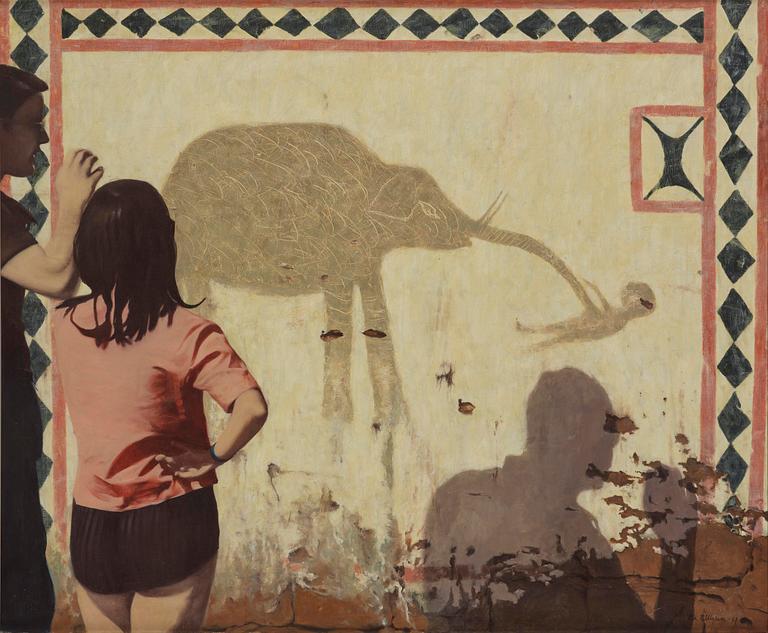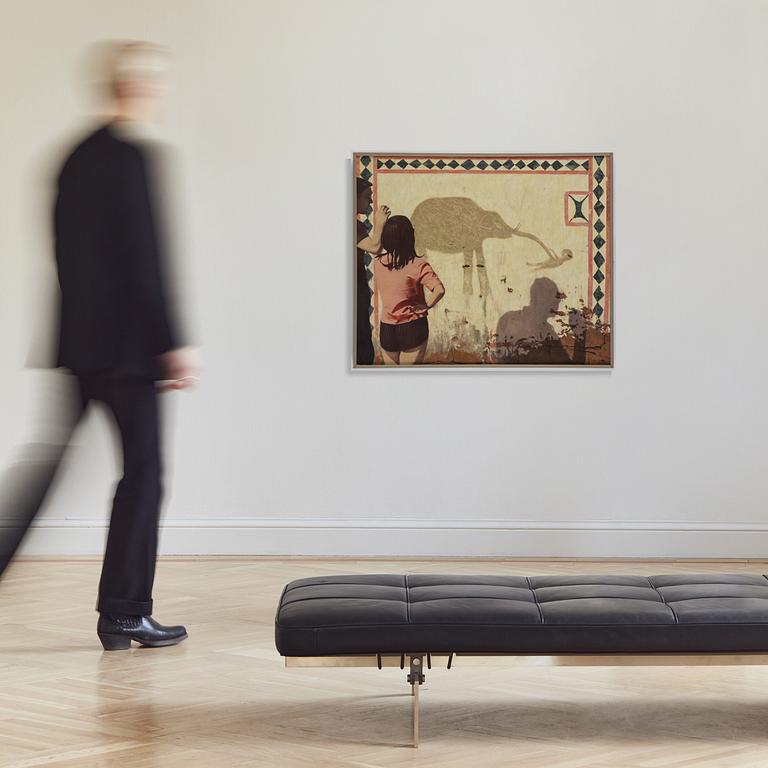Ola Billgren
"Målning"
Signed Ola Billgren and dated 1967. Oil on canvas 95 x 115 cm.
Alkuperä - Provenienssi
Acquired through Björn Bengtsson, Lund 1967.
Private Collection, Sweden.
Näyttelyt
Biennale de Paris, Paris, 1967 or 1971.
Galerie Belle, Västerås, exhibition no 15.
Rooseum, Malmö, "Ola Billgren - A Retrospective", 14 May - 4 August 1991.
Moderna Museet, Stockholm, "Ola Billgren - A Retrospective", 26 October - 8 December 1991.
Rooseum, Malmö, "Ola Billgren, till minne", 12 - 27 January, 2002.
Kirjallisuus
"Ola Billgren - målningar 1963-73", Gallery 69, 1973, illustrated and listed as no. 58.
Lars Nittve, Douglas Feuk and Ola Billgren, "Album - Ola Billgren - en retrospektiv", 1991, illustrated-full page p. 40.
Douglas Feuk, "Livslång rörelse - En essä om Ola Billgrens konstnärskap", 2024, illustrated p. 151.
Muut tiedot
"Images can always be given different tasks. My own paintings have two: they must function as aesthetic objects that stimulate the imagination, and they must carry a content that I myself do not really know or understand.” (Ola Billgren, 1971).
The mass culture that permeated Swedish society in the 1960s created a sense of disruption - a need to move forward and leave the past behind. At a time when non-figurative painting dominated, artist Ola Billgren deviated from the norm and began to explore realism and figurative representation. In his paintings from the 1960s and 1970s, Billgren drew inspiration from contemporary urban life, literature and film, and the illustrated press.
In the 1967 work ‘Painting’, Billgren used exotic images from a book about Africa and a photo of a modern Spanish couple from a weekly magazine. The motif is reminiscent of a photograph omitted from a family album or a still from a film. In this early work, the artist has captured a moment from a context that extends beyond the confines of the canvas.
A couple, perhaps tourists in a sunny and warm setting, stand in front of a primitive mural that they seem to take in and study. The man, positioned to the left of the woman, is only partially represented - his right arm and a shadowed profile of his face are visible. His fleeting presence is reflected in the shadow that falls across the lower right of the canvas. The woman takes on a clearer form, while maintaining a vicarious presence. She is turned away from the viewer and focuses instead on the difficult-to-interpret mural - an image within an image. Billgren uses the elements of the painting as jigsaw pieces, layering them and shifting the point of view to challenge his audience. By experimenting with the concept of human presence, Billgren creates a scene where the viewer ‘sees’ without being seen.
In Ola Billgren's captivating ‘Painting’, a movement is created between subjective and objective points of view. The subject of the painting appears to be a fragment - part of a much larger mystified narrative, where important details are withheld from the viewer. Although there are enough clues to suggest context, the most crucial keys to interpretation lie beyond the image itself. As the immediate photographic impression lacks a clear narrative, we are invited to stop and focus on the pure visual experience itself.










































































